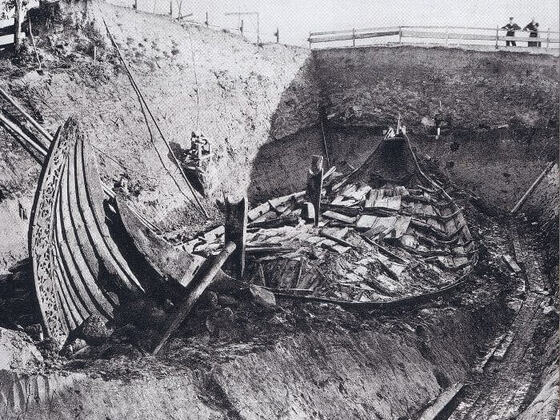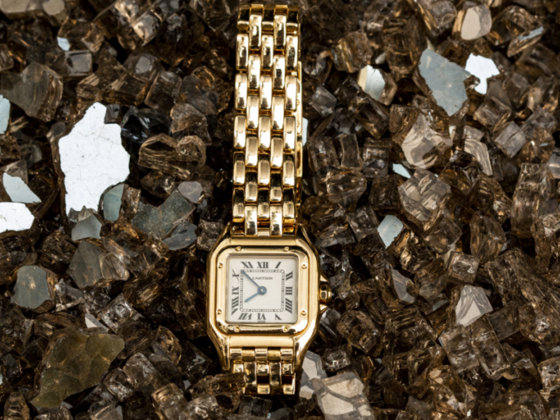The Gold Rush era stands as one of the most legendary periods in history, marked by excitement, ambition, and the allure of instant wealth. Yet, not everything that glittered was gold. Pyrite, commonly known as fool’s gold, played a pivotal role during this time, often misleading prospectors and shaping the narrative of the Gold Rush. In this article, you’ll discover what pyrite is, how it contributed to gold rush misconceptions, and crucial ways to distinguish it from real gold. Whether you’re curious about pyrite mineral properties, gold rush history, or how to spot fool’s gold, this guide has you covered.
What Is Pyrite? The Science Behind Fool’s Gold
Pyrite is a naturally occurring iron sulfide mineral, scientifically classified as FeS₂. Composed of iron (Fe) and sulfur (S), pyrite is best known for its shiny, metallic lustre and distinctive brass-yellow colour, which strongly resembles real gold. This visual similarity often leads to it being misidentified, especially by novice gold seekers and mineral collectors. As a result, pyrite earned the enduring nickname “fool’s gold.”
In terms of crystal structure, pyrite forms in a variety of geometric shapes, the most common being cubic, octahedral, and pyritohedral crystals. These formations give it a blocky or polygonal appearance, which can be strikingly beautiful. Many specimens feature sharp, well-defined crystal faces that reflect light beautifully, enhancing their golden shimmer. You’ll frequently find pyrite deposits in igneous, metamorphic, and sedimentary rocks, and it often appears in riverbeds, quartz veins, coal beds, and even in fossils.
Minerals Commonly Confused with Gold
In addition to pyrite, several other minerals were commonly mistaken for gold, compounding the confusion during the Gold Rush:
- Chalcopyrite: Slightly more golden and softer than pyrite, but still fool’s gold in disguise.
- Mica: Thin, flaky, and flashy, mica sparkles in sunlight, giving many false hopes.
- Marcasite: Chemically similar to pyrite, but with a different crystal structure and also mistaken for gold.
Despite this competition, pyrite remains the most notorious gold imitator due to its widespread availability and glaring resemblance. Its iridescent surface and glittering crystals continue to captivate beginners and seasoned collectors alike.
The Gold Rush: Setting the Stage for Deception
The mid-19th century marked a turning point in American and Canadian history, as massive gold discoveries sparked waves of migration, speculation, and adventure. Among the most famous of these events were the California Gold Rush of 1849 and the Klondike Gold Rush in the Yukon region during the late 1890s. These legendary moments in the gold rush story attracted tens of thousands of prospectors, dreamers, and entrepreneurs, from seasoned miners to ordinary individuals chasing quick fortune.
Many journeyed thousands of miles, leaving behind families, farms, and even countries, driven by the promise that gleaming riches awaited just beneath the surface of untouched lands. These hopeful individuals arrived with pickaxes, pans, and boundless ambition, but very little geological knowledge. Few could distinguish between real gold and similar-looking minerals. This widespread inexperience created the perfect environment for pyrite, or fool’s gold, to deceive even the most determined seekers.

How Pyrite Fooled the Masses
The Allure of Gold-Like Appearance
Pyrite’s brass-yellow colour and bright metallic lustre made it almost indistinguishable from gold to the untrained eye. Its crystals frequently glittered in riverbeds and quartz veins, the same environments where real gold was found, adding to the confusion. Under sunlight or by lamplight, a nugget or flake of pyrite could flash just like genuine gold, triggering waves of excitement among eager prospectors.
Inexperience and Gold Fever
During major gold rushes, most miners and fortune-seekers lacked geological knowledge or access to reliable mineral testing. In their feverish pursuit of riches, many based their discoveries solely on appearance. The pressure to strike gold and the hope for overnight wealth overwhelmed careful analysis, leading many to pocket and even sell bags of iron pyrite.
Rudimentary Testing and False Hope
Testing methods were primitive and not readily accessible in the field. Some miners tried crude bite tests, thinking that gold’s softness would reveal the truth, but this was unreliable and sometimes even dangerous. Simple colour and weight comparisons were misleading. Pyrite’s lighter weight and crystalline forms were easy to overlook in the rush, especially when gold excitement reached its peak.
Heartbreak and Financial Loss
Countless stories from the gold fields recount prospectors investing every last coin and countless hours into claims rich in “gold”, only to later discover that it was worthless fool’s gold. These harsh realisations led to ruined finances, broken dreams, and, for some, the loss of everything they owned.
A Lasting Impact on Gold Rush Society
Mistakes involving pyrite didn’t just affect individual miners; they quickly became cautionary tales woven into the fabric of gold rush history. The repeated pattern of hopes dashed by fool’s gold reinforced scepticism within mining communities. Word spread quickly, and prospectors began to seek more reliable methods to test their finds, such as streak testing or consulting with experienced assayers.
Ultimately, the era’s widespread confusion over pyrite served as a hard-learned lesson. It pushed gold rush societies toward improved identification techniques, fueled the development of better field testing tools, and left a cultural legacy—a reminder that not all that glitters, quite literally, is gold.
Pyrite vs. Gold: How to Tell the Difference
When it comes to identifying raw minerals in the field, knowing the clear differences between pyrite and gold can save you from disappointment and financial loss. While both minerals can appear strikingly similar at first glance, especially to inexperienced eyes, there are key physical and chemical traits that help distinguish real gold from fool’s gold (pyrite).
Understanding these differences, along with testing techniques, is essential for anyone involved in gold rush mining, mineral collection, or treasure hunting.
Side-by-Side Comparison of Pyrite and Gold
Here’s a breakdown of the essential physical properties:
| Property | Gold | Pyrite |
| Colour | Soft, buttery yellow | Brassy, metallic yellow |
| Hardness (Mohs) | 2.5 – 3 | 6 – 6.5 |
| Malleability | Soft, dents easily | Brittle, shatters |
| Streak | Yellow to golden streak | Greenish-black streak |
| Density | Very high (19.3 g/cm³) | Moderate (approx. 5 g/cm³) |
| Oxidation | Doesn’t tarnish | May rust or form surface oxidation |
| Shape | Flakes, nuggets, smooth | Cubes, polygons, sharp edges |
Visual Differences: Color, Luster, and Crystal Shape
Although both pyrite and gold can appear yellow and shiny, their specific hues and surface textures differ. Real gold typically has a smooth, soft-yellow tone with a subtle sheen, while pyrite is more metallic and reflects light sharply with a slightly greenish tint. Pyrite is commonly found in geometric crystal forms such as cubes or pyritohedra, unlike gold, which often appears as rounded flakes or irregular nuggets.
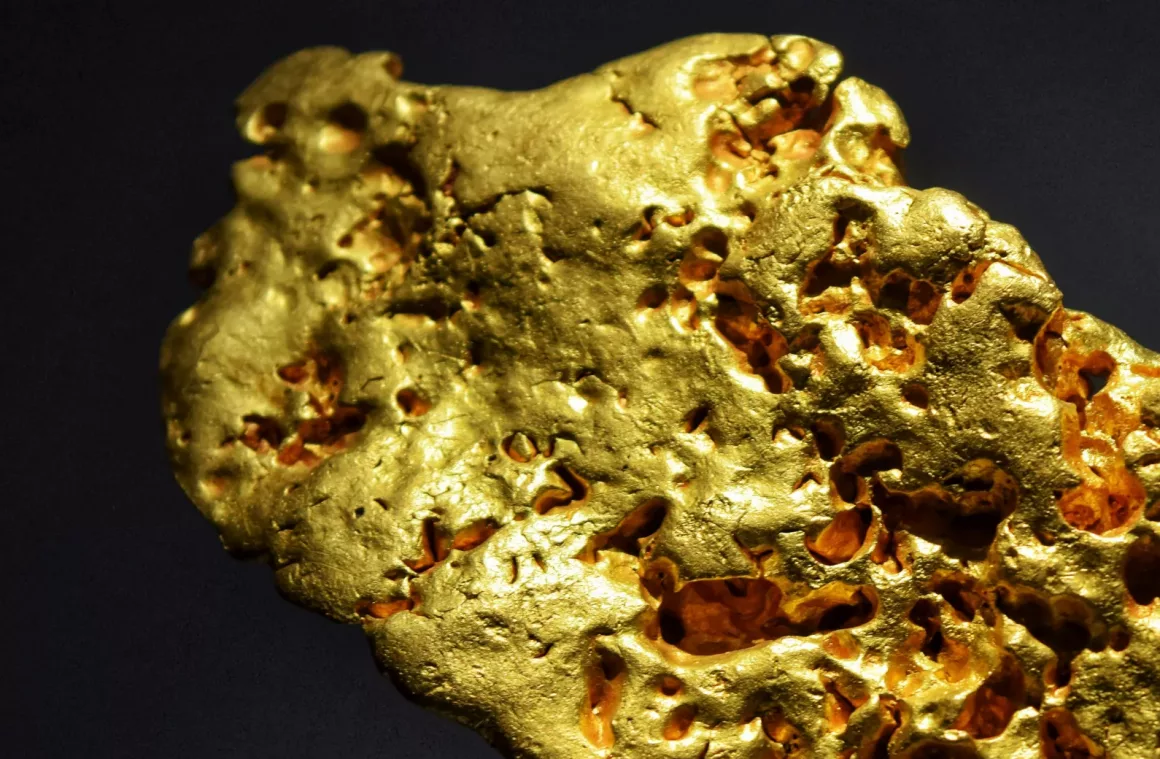
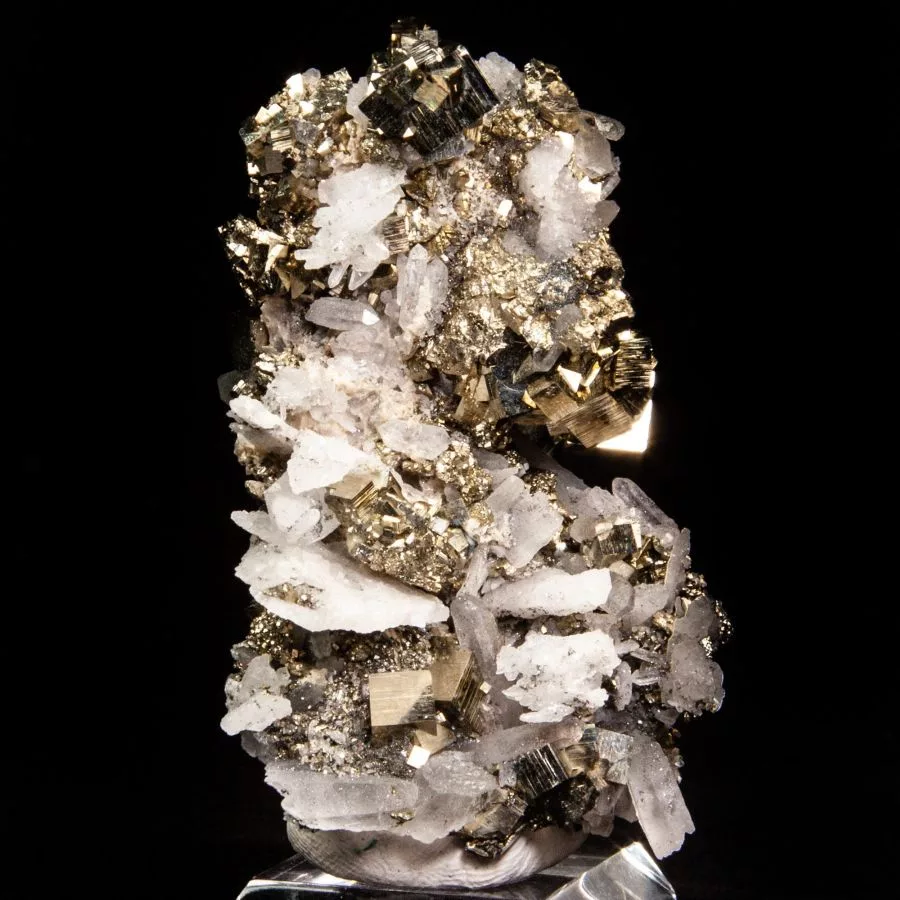
The Essential Tests: How to Spot Fool’s Gold
Fortunately, there are several easy testing methods that help determine whether that golden glint is wealth or wishful thinking.
1. Streak Test
Rub the mineral across a rough, unglazed ceramic tile:
- Gold will leave a yellow or golden streak.
- Pyrite will leave a greenish-black streak.
2. Malleability Test
Gently press or tap the mineral with a metal tool:
- Gold, being soft and malleable, will bend, flatten, or dent.
- Pyrite is brittle and will crumble, crack, or break apart under pressure.
3. Density Test
Hold the specimen in your hand:
- Real gold is significantly heavier than pyrite due to its high density.
- Pyrite will feel much lighter, despite its similar size.
4. Oxidation Check
Observe the surface over time or soak the sample briefly:
- Gold remains bright and does not tarnish.
- Pyrite may oxidise, developing a brownish or rusty coating, especially in moist environments.
5. Shape and Structure
Examine the crystal form under a magnifying glass or small field microscope:
- Gold appears in irregular masses or smooth, rounded particles.
- Pyrite often forms sharp-edged cubes or clustered geometric shapes.
Why These Tests Matter
During the Gold Rush, many prospectors relied solely on visual inspection, which often led to mistaken identity and financial heartbreak. Understanding how to accurately test and distinguish between pyrite and gold allowed more experienced miners to focus their efforts wisely and avoid wasting precious time on worthless rock.
Today, whether you’re a modern prospector, rockhound, or student of earth science, remembering these tests can help you avoid falling for fool’s gold and ensure you understand the actual differences between pyrite and gold.
The Lasting Legacy of Fool’s Gold
From Golden Dreams to Cultural Symbol
The story of pyrite’s deception didn’t end in the goldfields; it endured through history, folklore, and everyday language. During the 19th-century gold rushes, countless miners mistook pyrite for gold, leading to heartache, wasted resources, and lost fortunes. These powerful emotional experiences embedded themselves in the broader gold rush story, turning “fool’s gold” into more than a mineral; it became a symbol of misplaced trust and unfulfilled dreams.
Today, the term fool’s gold is widely recognised as a metaphor. In both popular culture and financial markets, it’s used to describe situations that appear valuable or promising at first glance but ultimately turn out to be misleading or worthless. The phrase captures the essence of human optimism clouded by illusion, an idea that originated in rugged mining camps but is now applied everywhere from Wall Street to everyday speech.
Pyrite in the Language of Caution
Beyond mining history, fool’s gold continues to serve as a linguistic cautionary tale. Investors often refer to speculative bubbles, overhyped stocks, or misleading marketing strategies as examples of “fool’s gold” in modern finance. The phrase reflects our natural tendency to chase what glitters, without always verifying its true worth.
Even in literature and film, fool’s gold symbolises the dangers of unchecked ambition, the cost of shortcuts, and the power of illusion. This timeless metaphor, born from mineral confusion, now helps convey complex life lessons with a single phrase.
Pyrite’s Secret Wealth: Traces of Real Gold
Although historically seen as worthless in the context of gold mining, modern science has added an intriguing twist to the story. Advanced spectroscopic and microscopic technologies have revealed that some pyrite contains tiny amounts of real gold, which scientists call “invisible gold.” These trace particles are often trapped within the mineral’s crystal lattice and are not visible to the naked eye.
While this doesn’t make pyrite highly valuable in most cases, in certain deposits, the concentration of microscopic gold is significant enough to warrant industrial extraction. Mining companies now analyse pyrite-rich ore for potential gold content using methods unimaginable during the days of the Gold Rush.
Lessons Learned: Knowledge, Scepticism, and Gold Fever
The enduring appeal of the Gold Rush era lies not just in its adventure but in its exploration of human emotion. The story of pyrite and fool’s gold reveals how tightly hope and risk are intertwined. People chased dreams at great personal risk—not because they were reckless, but because they believed.
This emotional component helps explain why rational thinking sometimes takes a backseat when stakes are high. The cold shine of pyrite didn’t seem any less real to those seeking a better life. Today, understanding this psychological inclination helps us navigate similar situations, where the promise of success may tempt us to overlook warning signs.
Whether you’re investing, building a business, or simply chasing a goal, the lessons of fool’s gold remind us to balance optimism with realism, enthusiasm with inquiry.
Final Thoughts: Learning from the Lure
The saga of pyrite and the Gold Rush endures not only because it shaped history, but because it continues to shape thinking. It reminds us that glittering moments of opportunity must be paired with knowledge, testing, and constructive doubt. Whether out in a goldfield or navigating modern life, these are the tools that truly lead to treasure.
After all, the most valuable lesson that fool’s gold ever offered wasn’t about metal at all—it was about the human pursuit of truth.
Frequently Asked Questions (FAQ’s)
Fool’s gold is the nickname for pyrite, an iron sulfide mineral famous for resembling real gold.
Key differences include colour, hardness, malleability, streak, and weight; all easily tested with simple tools.
No prospector grew rich by collecting pyrite; its value paled in comparison to real gold.
Yes, pyrite has industrial applications and is popular among mineral collectors, though it remains far less valuable than gold.
Ready to Start Your Gemstone Journey?
Don’t wait to discover the world of gemstones! Explore these essential reads right away.
Fascinated by this article and want to deepen your gemstone expertise? Dive into our comprehensive Gemstone Encyclopedia. Here, you’ll discover detailed information about hundreds of precious and semi-precious stones, including their properties and values.
For those interested in the rich cultural significance and fascinating stories behind these treasures, our History section offers captivating insights into how gemstones have shaped civilisations. Or perhaps you’d like to learn more about birthstones?
And if you’re considering gemstones as more than just beautiful adornments, visit our Precious Metal Investing guide. Here you will learn how these natural wonders can become valuable additions to your investment portfolio.
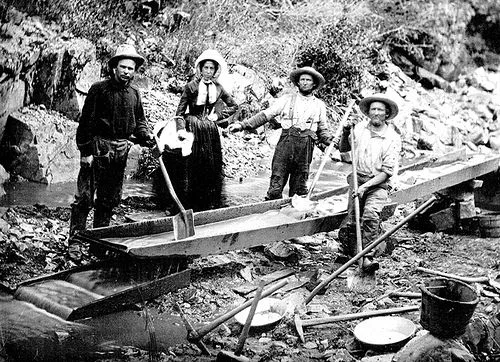
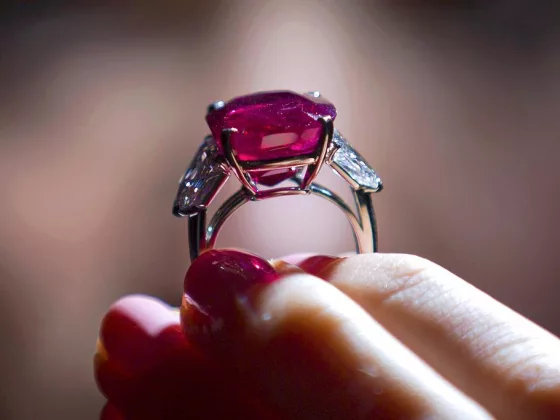

![Pigment analysis of Raphael's masterpiece[7][8] reveals the usual pigments of the renaissance period such as malachite mixed with orpiment in the green drapery on top of the painting, natural ultramarine mixed with lead white in the blue robe of Madonna and a mixture of lead-tin-yellow, vermilion and lead white in the yellow sleeve of St Barbara.](https://gemstonesinsider.com/wp-content/uploads/2025/09/Raphael-Madonna_Sistine_sm-560x420.jpg)
